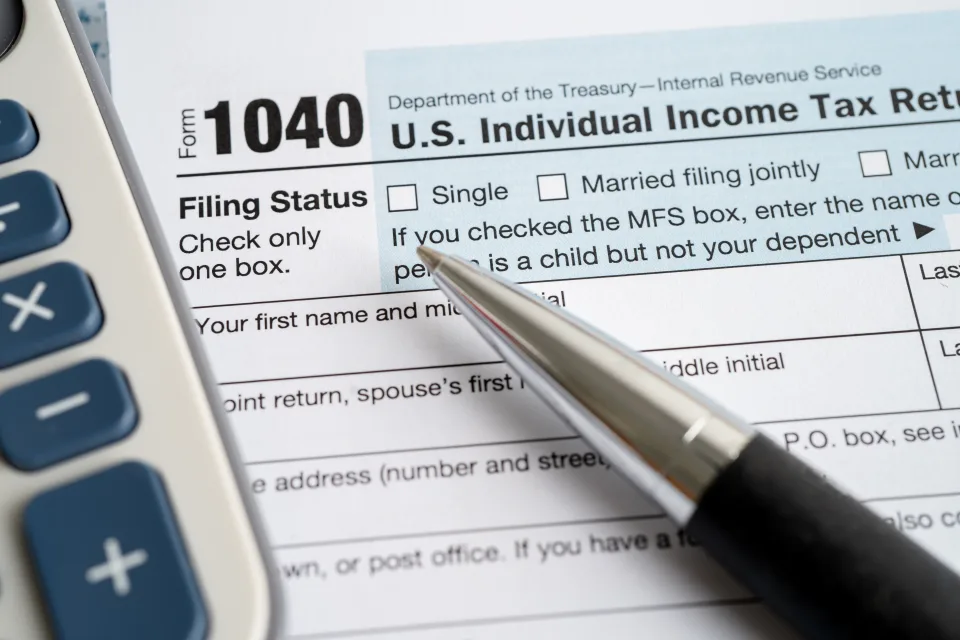
For decades, you’ve been socking away retirement savings allowing them to grow tax-free. If you turned 72 last year, though, it’s time to start taking some of that nest egg out — by April 1.
That’s the final deadline to make your first required minimum distribution, or RMD, from IRAs (including SEP and SIMPLE IRAs), 401(k)s, 403(b) plans and other similar workplace plans without incurring a penalty.
It also marks the first of these required withdrawals that you must make every year and the timing could complicate your finances by increasing your income.
“With the 2022 deadline fast approaching, you’ll want to prioritize taking your RMD as soon as possible to ensure you meet the April 1 deadline and avoid the tax penalties,” Maria Bruno, a certified financial planner and head of U.S. wealth planning research at Vanguard, told Yahoo Finance.
Here’s what you need to know.
Nuts and bolts of RMDs
Your RMD is a required annual withdrawal that is taxed as ordinary income. RMDs are usually taken at the end of the year, but those of you who turned 72 during 2022 are covered by a special rule that allows the first distribution to be delayed until April 1 of this year.
While the new law increases the age you must withdraw from your retirement accounts to 73 starting in 2023 and will bump up higher to age 75 in 2033, for folks who turned 72 in 2022, the mandatory distribution is due in a handful of days.
One exception that may let you kick your RMD from an employer-sponsored 401(k) or (403(b) plan even further down the line is to stay on the job. You can find more information about that here.
The amount you must pull out is calculated by dividing your tax-deferred retirement account balance as of Dec. 31 of the preceding year by a life expectancy factor that corresponds with your age in the IRS Uniform Lifetime Table. As your life expectancy declines, the percentage of your assets that must be withdrawn ramps up. If you reached age 72 in 2022, your first RMD is based on your account balance on December 31, 2021.
Of course, you can withdraw more than required, but that distribution in excess doesn’t count towards your required amount for future years.
If you have multiple accounts, you’ll need to calculate your RMD for each IRA and employer-sponsored plan separately. When you take distributions from your IRAs, you can withdraw them from any account you choose. Employer plans work differently. You have to take each required withdrawal amount separately from each account.
Married couples must take their distributions separately. You can’t combine the total amount you each are required to withdraw and only pull from one spouse’s tax-deferred account.
Getting help with the calculations
Without question this is a daunting process when you go it alone.A tax professional can help you suss out the amount you must take each year, or you can use an online calculator such as this one AARP provides, or this one Fidelity has on its website. The IRS also provides worksheets.
“Luckily, most companies, including Vanguard, will calculate your RMD for you, which can make this process much easier for the average investor,” Bruno said.
Typically, the firms will let you know in January what your required amount will be for the coming year, and you can opt to have your withdrawals spread out over the year. Say, for example, you have a $50,000 mandatory distribution for 2023, you could schedule a monthly withdrawal of roughly $4,166.
Fallout of missing or miscalculating your RMD withdrawal
If you fail to take your 2022 withdrawal by April 1, you will be hit with a 50% penalty on the amount not distributed. Under a new law, for tax years beginning after December 29, 2022, seniors who fail to take the required minimum distribution, the penalty drops to a 25% on the amount. But if you correct your mistake generally within two years, the penalty could be reduced to 10%.
The penalty may also be waived if you can make the case that the mistake in distribution was due to “reasonable error and that reasonable steps are being taken to remedy the shortfall,” according to the IRS. To qualify for this relief, you must file Form 5329 and send a letter explaining what happened.
The rules, however, do not apply to Roth IRAs while the owner is alive. The rules do apply to the beneficiaries of Roth 401(k) accounts.
Moving forward, automating your withdrawal can avoid the penalties of forgetting to take it or miscalculating the amount required for you to take. Some plan providers and custodians permit you to set up automatic withdrawals, based on the same criteria of age and year-end account balances, with the proper amounts calculated and then withdrawn and sent to you by check or direct deposit on the date you select.
You can also opt to have taxes withheld in advance. If you don’t, make sure you set aside money to cover that bill.
Double hit in 2023
For those taking their first withdrawal, “the biggest thing is to realize that you will have to take two RMDs in this calendar (tax) year,” Jim Blankenship, a certified financial planner at Blankenship Financial Planning in New Berlin, Illinois, told Yahoo Finance.
If you’re withdrawing that required amount for the first time from retirement accounts by April, brace yourself, you must also take another distribution at the end of the year. Your second RMD is due by Dec, 31, 2023, based on your account balance on Dec. 31, 2022.
Both distributions will be reported on your 2023 federal tax return, seriously boosting your taxable income.
“You will want to plan ahead and consider the implications of the additional taxes in one year,” Bruno said. “For example, not only will the increase in income potentially push you into a higher marginal tax bracket, but it could also trigger some additional taxes, such as taxation of Social Security benefits or Medicare Part B premium surcharges.”
Here’s how that works: If you file a federal tax return as an individual and your combined income — adjusted gross income, plus nontaxable interest from investments and one-half of your Social Security benefits — is between $25,000 and $34,000 (or $32,000 to $44,000 for joint filers), you may have to pay income tax on up to 50% of your benefits. If you earn more than $34,000 (or more than $44,000 for joint filers), up to 85% of your benefits may be taxable.
Your RMD can also have repercussions on your Medicare premiums.
Premiums are based on your modified adjusted gross income, or MAGI. That’s your total adjusted gross income plus tax-exempt interest. If you have higher income, you might wind up paying an additional premium amount for Medicare Part B and Medicare prescription drug coverage. The standard rates bump up for individuals with a MAGI above $97,000 and for married couples with a MAGI above $194,000.
“Medicare Advantage premiums are not based on income,” Philip Moeller, a Medicare and Social Security expert and principal author of the “Get What’s Yours” series of books about Social Security, Medicare, and health care, told Yahoo Finance. “But high-income surcharges apply to all Medicare enrollees, including Medicare Advantage enrollees. The surcharges apply to Parts B and D of Medicare. Everyone with an MA plan has to first have Part B, and nearly everyone in an MA plan also gets a Part D plan.”
Trimming the tax bill
There are ways to reduce your tax liability, though.
For some retirees, the mandatory RMD can be “an opportunity to take advantage of the Qualified Charitable Distribution,” Danielle Howard, a certified financial planner with Wealth By Design in Glenwood Springs, Colorado, told Yahoo Finance. “A person can have their custodian or retirement plan administrator send the withdrawal directly to a qualified non-profit, which keeps it off the individual’s tax return.”
For those who are at least age 72, these charitable distributions count toward your required minimum distribution for the year. You can exclude from gross income up to $100,000 annually. One caveat: 1099 Forms do not show that the distribution was given to charity.
“The IRA owner needs to communicate with their CPA and make sure they know not to include the distribution in income,” Howard said.
And just because you have to pull the money out of a tax-deferred plan doesn’t stop you from reinvesting those funds, according to Rita Assaf, vice president of retirement at Fidelity Investments.
“For those who may not need their RMD funds yet, you can re-invest it into a non-retirement account,” Assaf told Yahoo Finance. “One note of caution here is that you might need to sell investments to make your RMD funds available, but some firms will allow you to fulfill your required minimum distribution by moving investments in-kind.”
























